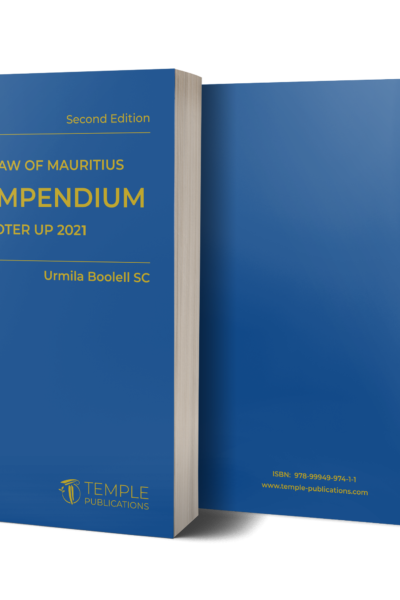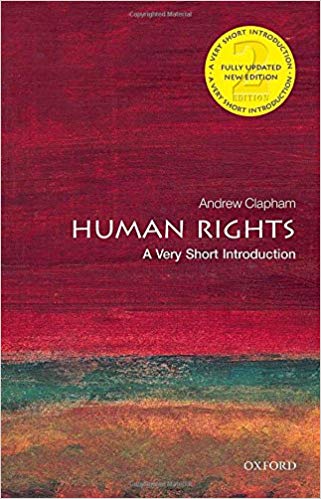Description
Author: Urmila Boolell, SC
The “Case Law of Mauritius – A Compendium; Including Noter Up 2020 and Noter Up 2021” purports to be a thematic compilation of all relevant Supreme Court of Mauritius and Privy Council judgments, relating to specific topics (with the exception of ones concerning Criminal law), spanning the period from the beginning of official law reporting in 1861 to 2021.
The set comprises an initial 5–Volume investment which will benefit from annual noter-up editions, enabling practitioners to make insightful and informed decisions on an ongoing basis. The publication does not contain any commentaries or reviews of the findings of the Supreme Court, but simply conveys the judgments in the same form as they are delivered. The actual wording in the judgments have been freely replicated and generous extracts of the actual judgments are included.
The Noter Up 2020 covers the spectrum of Mauritian case law for the year 2020, enabling practitioners to make insightful and informed decisions.
Table of Content:
Volume 1
- Administrative Law
- Appeals
- Commercial Law
- Company Law
- Constitutional Law
Volume 2
- Contract Law
- Law of Contempt
- Employment Law
- Law of Evidence
- Law of Execution
Volume 3
- Family Law
- Injunctions
- Insolvency
- Insurance Law
- International Law
- IP
- Jurisdiction
- Leases
Volume 4
- Practice & Procedure
Volume 5
- Property Law
- Revenue Law
- Statutory Interpretation
- Law of Succession
- Tort Law
About Author
The “Compendium”, as I affectionately call “Case Law of Mauritius – A Compendium”, is a labour of love – motivated by nothing else than the profound fascination I have for my profession.
When writing the first edition of the Compendium, I tried to plug the gap left after the previous compilations of Supreme Court judgments were no longer available. Indeed, I had very big shoes to fill – my predecessors were all retired eminent Supreme Court Judges bearing famous names such as Green, Hughes, Nairac, Lalouette and Glover.
At that time, the challenge was that of doing justice to the work which had been done before mine whilst adopting a more personal stylistic touch. As a young lawyer and a user of the book, I tried to make the task of finding the right judgment more user – friendly. I concentrated on identifying the right headings and ensuring that comprehensive indexes, both alphabetical and chronological, were readily accessible.
I started with very modest aspirations, being fully alive to the reality that an unknown young woman lawyer undertaking such a mammoth task, ran the inevitable risk of being negatively compared to her predecessors. Happily, I was not totally right, and the Compendium received a warm welcome from the very first day of its appearance.
I had planned to update the work annually and the loose-leaf format allowed me to keep the book updated for 3 years after its original launch in 1994.
However, with my professional and personal commitments taking over my life in the following years, it became impossible for me to continue updating the book annually on my own. Thus, the Compendium slowly became redundant and out of date. When I was finally able to bring my attention back to updating it, I realized that a lot of water had gone under the bridge and my various attempts at reviving the exercise were all short lived and unsuccessful. By then, original copies of the Compendium had sold out and there was nothing to replace it.
Finally, about 7 years ago, I set out to seriously resume the updating of the Compendium. When I started the exercise, I realized that it was impossible to update it on the original script. I had matured as a person and as a lawyer – I now saw these judgments in a very different light and did not always relate to the manner, in which they had been compiled or summarized in the first place. Soon enough it became evident that an updating would not work. The book had to be wholly re-written. I therefore took my all the courage I had in both hands and embarked on what would be a daunting and interminable expedition. On many occasions, I felt like giving up – thinking that there would perhaps be no need for a Compendium any more with modern search engines and research tools. But I consistently sleepwalked into the project again – as though my subconscious self, had its own agenda.
This time round, in the second edition, my motivations were very different. I had gained enough confidence to be more assertive and had a much clearer idea of what purpose the new edition would serve. I did not see the practical problems of dealing with a voluminous text – I only knew that what I was doing was not about to be repeated for a long time to come – if ever.
When I completed the work, with the benefit of long periods of confinement throughout this year, I realized that this was the project which best defined me as a lawyer. The drive was purely personal – so was the sense of achievement.
This time round, the updating will not be left to chance and I have put together a system which will ensure continuity – with or without me.
Urmila Boolell, SC











